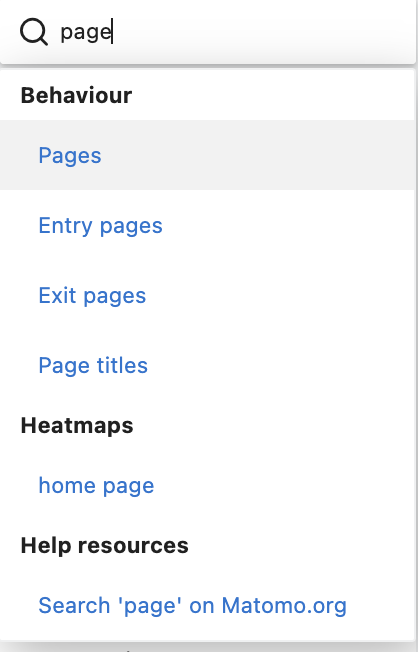Effective on-site search functionality is crucial for any website. Why? Because it directly impacts user experience, accessibility, and engagement. Whether visitors are shopping online, reading articles, or seeking specific information, a powerful search function can make their experience smooth and intuitive, saving time and reducing frustration.
Understanding the Basics of On-Site Search
On-site search functionality refers to the search tool within a website that helps users find content without leaving the site. For all types of websites, this tool plays a vital role in facilitating easy access to a wide range of information and products. A well-designed search function ensures that users can quickly locate what they need, enhancing overall website usability.
Essential Components of an Effective Search Function
Search Box Placement
The search box should be prominently placed where users can easily see and access it. Common placements include the top right corner or center of the homepage. Visibility and accessibility are key to ensuring users know where to start their search.
User Interface Design
A user-friendly search interface is essential. It should be intuitive, with clear instructions and easy navigation. Simple design elements like a clean search bar, a prominent search button, and a clear results layout can significantly enhance the user experience.

Best Practices for Implementing On-Site Search
Inclusion of Search Filters
Search filters allow users to refine their results based on various criteria such as date, category, or relevance. This feature is particularly useful for websites with extensive databases, helping users narrow down their searches to find the most relevant information.
Auto-Complete Features
Predictive text or auto-complete features can enhance search efficiency. As users type, suggestions appear based on popular queries or similar terms, speeding up the search process and helping users formulate their queries more effectively.

Responsive Design
With the increasing use of mobile devices, it’s essential to ensure that the search function works seamlessly across all devices. A responsive design adapts to different screen sizes, providing a consistent search experience on desktops, tablets, and smartphones.
Integrating Advanced Search Features
Faceted Search
Faceted search allows users to navigate complex information structures by applying multiple filters simultaneously. This feature is especially useful for large websites with diverse content, enabling users to drill down into specific categories or topics.
Natural Language Processing (NLP)
NLP enhances the search tool's ability to understand human language, making it more intuitive. By interpreting the intent behind user queries, NLP can deliver more accurate and relevant results, improving overall search performance.
Usage of Metadata
Optimizing content with meta tags helps improve search result accuracy. Metadata provides additional context to the search algorithm, making it easier to match queries with the most relevant content.
Regular Assessment and Updates
Feedback Mechanisms
Incorporating feedback mechanisms allows users to provide input on their search experiences. This feedback can be invaluable in refining search functionalities and addressing any issues users may encounter.
Analytics and Monitoring
Using tools like Matomo to track search patterns and behaviors can provide insights into how users interact with the search function. This data helps identify areas for improvement and measure the effectiveness of implemented changes.
Continuous Testing
Routine testing and updating of search capabilities ensure that the system remains efficient and up-to-date with the latest technology. Continuous testing helps catch and fix issues before they affect the user experience.
Common Challenges and Solutions
Handling Misspellings and Synonyms
Search functions should be designed to handle common misspellings and recognize synonyms. Implementing spelling correction algorithms and synonym libraries can significantly improve search accuracy, ensuring users find the information they need despite input errors.
Speed Optimization
Search result speed is crucial for maintaining user satisfaction. Optimizing the search function to deliver fast results involves efficient coding, server capabilities, and database management.
Case Studies
The U.S. Army Family and MWR websites faced a significant challenge with their on-site search functionality, which resulted in a high bounce rate of 84%. Users struggled to access comprehensive information due to overlapping content between garrison sites and the HQ site, as well as the prevalent use of military jargon and acronyms. This created a frustrating user experience and missed engagement opportunities.
To address these challenges, several key improvements were implemented. AI technology was employed to build lists of synonyms and acronyms, improving the relevance of search results. Additionally, a new interface was created for administrators to link specific search terms to particular results. These solutions led to a significant improvement in the search experience, with increased user satisfaction and engagement, a decrease in repeat searches, and a lower average bounce rate. Read the entire case study.
Enhancements and Extensions
Two notable extensions that can further enhance on-site search functionality are the Macareux Member Search and Enlil Search Templates.
The Macareux Member Search ($25) adds an advanced search form for members, improving the website's user search functionality by allowing for more precise and detailed searches. This is particularly beneficial for membership-based sites or community portals.
The Enlil Search Templates (free) provide custom templates to enhance the functionality of the Core Search Block. These templates can be tailored to improve the visual presentation and usability of search results, ensuring a more seamless and engaging search experience for users.
Conclusion
A robust on-site search functionality is essential for any website. By understanding the basics, incorporating essential components, implementing best practices, integrating advanced features, and regularly assessing performance, website owners can ensure their search tools effectively meet user needs.
